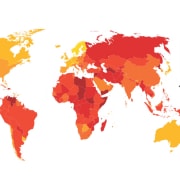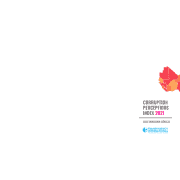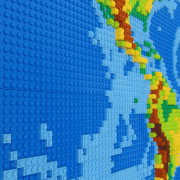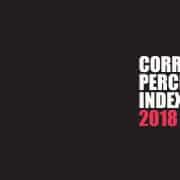|
Getting your Trinity Audio player ready...
|
Released today, Transparency International’s (TI) Corruption Perceptions Index (CPI) 2017 shows a high corruption burden in more than two-thirds of the 180 countries surveyed – and anti-corruption action is not keeping pace. Despite global attempts to combat corruption, the majority of countries are moving too slowly in their efforts, says TI. While stemming the tide against corruption does take time, in the last six years many countries have made little progress, if any.
More than two-thirds of countries (69%) score below 50 on the CPI 2017, with an average score of 43. A score of 100 indicates a country free from corruption, while a score of 0 indicates a country that is highly corrupt.
South Africa’s score for 2017 is 43, with a ranking of 71. In 2016 the country scored 45, up one place from 44 in 2015, and its rank on the 2016 CPI fell three places from 61 to 64.
It is clear that the continued impunity of South Africa’s corrupt has ensured that we have not progressed beyond the low- to mid-40s on the index since 2012, when Corruption Watch was launched. At that time, the score was 43 and has wavered over the years between 42 and 45, but is now back at where we were five years ago. This signals an alarming lack of progress in really improving our standing in a global context, in spite of ramped up efforts to out the perpetrators of corruption.
Sub-Saharan Africa’s average score is 32, with Botswana on top at 61 and Somalia at the bottom with just 9. South Africa is in ninth position on the sub-Saharan African ranking, after sharing 7th place with Senegal last year.
Download the global results.
Download the sub-Saharan Africa results.
Corruption linked to press freedom
A revealing theme of the 2017 CPI was that of the relationship between corruption and the ability of activists, journalists and civil society to speak out against corrupt activities. “Given the current global climate, where crackdowns on civil society and media are widespread across the world, this new analysis is both timely and necessary,” TI said.
The research found that countries that protect journalistic freedoms and engage civil society in open dialogue tend to have lower levels of corruption as measured by the CPI. Conversely, those countries that repress the mouthpieces of their citizens – media and civil society – often score worse on the index. In corrupt societies, ordinary people suffer these denials the most, as they are unable to stand up for their rights and demonstrate their concern when their basic needs are not met
And with this diminished protection of journalists comes danger. Every week a journalist is killed in a highly corrupt country – in fact, almost all journalists killed since 2012 were killed in corrupt countries.
“No activist or reporter should have to fear for their lives when speaking out against corruption,” said Patricia Moreira, TI’s MD. “Given current crackdowns on both civil society and the media worldwide, we need to do more to protect those who speak up.”
The analysis, which incorporates data from the Committee to Protect Journalists (CPJ), shows that in the last six years, more than nine out of 10 journalists were killed in countries with CPI scores of 45 or less. In addition, one in five journalists who died were covering a story about corruption. Sadly, justice was never served in the majority of these cases.
Unesco has designated 2 November as the annual International Day to End Impunity for Crimes Against Journalists. The organisation said that when attacks on journalists remain unpunished, a very negative message is sent that reporting the “embarrassing truth” or “unwanted opinions” will get ordinary people in trouble.
“Perpetrators of crimes against journalists are thus emboldened when they realize they can attack their targets without ever facing justice” – but the kind of news that gets silenced is exactly the kind that the public needs to know.
Journalists targeted
Globally, between 2012 and 2016 (the year covered in the 2017 CPI) 329 journalists and media workers lost their lives in killings where the motive was confirmed. The number varies from report to report, but in 2016 alone, 102 media workers lost their lives according to Unesco, and the International News Safety Institute (INSI) reported that 115 were killed. The same number (115) are reported to have died in 2015.
“Most of those killed are not involved in major civil wars or international conflicts – they are local journalists going about their normal work of seeking to hold power to account and to shine light on crime and corruption,” said INSI chairperson Richard Sambrook.
These figures do not include the many more journalists, who on a daily basis suffer from non-fatal attacks, including torture, enforced disappearances, arbitrary detention, intimidation and harassment in both conflict and non-conflict situations, according to the CPJ. Furthermore, there are specific risks faced by women journalists, including sexual attacks.
In Southern Africa, the region has been fairly quiet in terms of journalists killed, although harassment and victimisation of members of the press, in all countries in the region, has not let up. In South Africa in 2014, journalist Michael Tshele was shot and killed by police while covering a community protest. The officer responsible was later sentenced to a 15-year jail term. In Lesotho in July 2016, newspaper editor Lloyd Mutungamiri was shot outside his home. He recovered, and five members of the country’s armed forces were charged with his attempted murder.
Around the same time in South Africa, journalists with the SABC were suspended when they protested a decision by the broadcaster not to cover public protests against government institutions. Eight employees lost their jobs in the crackdown against media freedom and one of them, Suna Venter, died in 2017 of a heart condition reported to be aggravated by the stress and victimisation she endured in the time since she was fired.
In Zambia, Zimbabwe, Botswana, Angola, and Mozambique, journalists and independent media houses have been harassed to varying degrees during 2016 and in the years before. As far back as 2013 the CPJ identified Zambia as one of the countries showing a worrying trend of declining press freedom.
The tumultuous events of 2017 will reflect in next year’s CPI.








